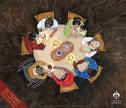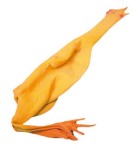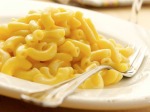 Poverty and hunger are not inevitable.
Poverty and hunger are not inevitable.
A horrific tragedy hit one of the world’s poorest countries earlier this week and the response has been immediate and abundant. Humanity is at its finest at times like these and dim shouts and ignorant remarks from the fringes have been promptly and firmly tamped down.
Food, medicine, equipment, manpower, shelter, infrastructure—even prayer—are tumbling into Haiti from every corner of the world. As I write this, the small airport there is bulging to the point where flights have been suspended for lack of return fuel and runway space. The help this tragically poor nation deserves comes after a record shattering earthquake that sent a nation teetering on a precipice firmly over the edge. After decades of unimaginable poverty and despair and four previous natural disasters, Haiti is leveled. Haiti is a country in ruin.
The images are gripping, the need dire, the event almost beyond comprehension. I sit here and wonder what I can do beyond sending a few dollars and offering up prayers. How can I make a difference to honor Haiti’s millions of sad, desperate, proud souls.
In the midst of all this a memory struck me after a Facebook friend commented that he couldn’t focus to work; he was so gripped by Haiti’s plight.
Decades ago a group of aid workers (in Africa) hit on an idea that was so simple and so effective you might wonder why no one thought of it before. The village they were working in was devastated by poverty and by hunger; locals were wholly dependent on a corrupt and unreliable system for food and for sustenance.
The lives of these villagers were dramatically changed when they were taught to farm, rotate crops, irrigate. They were encouraged to coop what they grew and to carry their extra crop to a city market several times a year. The farms also afforded them the opportunity to (eventually) grow feed for animals that in turn gave them milk, eggs, meat.
A few cents worth of seed and some dedicated men and women sharing their expertise can change the world….one small village at a time. The extended benefits of a healthy populace is immeasurable and it is with this that I am refocusing.
Hunger is a misery and a poverty that cuts the souls, ruins the heart and destroys the body. But it is not inevitable and I—we—-can do something about it. Pick one thing. Do it. Encourage everyone you know to do the same. “Light one little candle…”
Improve food supplies
- Plant home, community and school gardens
- Find ways, neighborhood permitting, to raise poultry for eggs to eat or sell
- Become involved in co-operative efforts to grow and sell foods
- Support local farmers; buy locally grown foods
- Establish centers or food banks to share food.
Help others
- Volunteer to work for hunger issues;
- Volunteer to work in food or meal distribution centers
- Establish food centers or food banks to share extra food
- Work with the local food industry to redistribute surplus food
- Invite commercial food growers and producers to participate
Education, the Community and Sharing
- Know who in the community is working to fight hunger, listen to them, and share ideas with them, support them
- Know who in the community has knowledge about health and nutrition, listen to them, and share ideas with them
- Share information with families, friends and neighbors
- Share school projects and post reports in community spaces
- Share ideas wit community leaders, politicians
- Urge community leaders, business leaders, local health workers, educators… to become involved with school projects around issues of hunger and nutrition.





 There’s been a happy confluence of events recently; my foodie stars are aligned.
There’s been a happy confluence of events recently; my foodie stars are aligned. Julia Child for me, like so many, many others, provided my first peek into “How It’s Supposed To Be Done”, cooking that is. Her original Mastering the Art of French Cooking was the second cookbook I ever owned and it remains one of my favorites. I still have my original copy—dog eared and stained—and her recipes offer the best guidance for a new cook (which I was back in the day) and timeless recipes and techniques for the cook with more experience (which I like to think I’ve become).
Julia Child for me, like so many, many others, provided my first peek into “How It’s Supposed To Be Done”, cooking that is. Her original Mastering the Art of French Cooking was the second cookbook I ever owned and it remains one of my favorites. I still have my original copy—dog eared and stained—and her recipes offer the best guidance for a new cook (which I was back in the day) and timeless recipes and techniques for the cook with more experience (which I like to think I’ve become). My sons could not be more different. While one was born looking like the ultimate Gerber baby, smiling, pudgy, pink and perfect, the other popped into this world with a permanent scowl, looking like a plucked chicken and sporting a uni-brow that extended into his hairline.
My sons could not be more different. While one was born looking like the ultimate Gerber baby, smiling, pudgy, pink and perfect, the other popped into this world with a permanent scowl, looking like a plucked chicken and sporting a uni-brow that extended into his hairline.